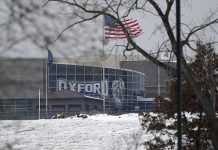Historic preservation, like baseball, involves some swings and misses. Just ask the Friends of Historic Hamtramck Stadium, the group trying to save a surviving Negro League-era ballpark. Some Friends were part of the Tiger Stadium Conservancy and Navin Field Grounds Crew — groups that struck out trying to save Tiger Stadium from the wrecking ball. But this time, they’re getting help from city hall.
Hamtramck City Planner Melanie Markowicz is no rookie at trying to save buildings. When the former president of Preservation Detroit started her job with the city, the stadium was her first order of business. “The first day of work, I asked the city manager if I could start pursuing a specific grant,” she says. It was from the National Park Service. The manager said yes, and she started researching the stadium’s history. And what a history it was.
John Roesink built the ballpark in 1930 for the Detroit Stars, the Negro National League team he owned. Players such as Satchel Paige, Josh Gibson, and Cool Papa Bell roamed the grounds — all now members of the National Baseball Hall of Fame in Cooperstown, N.Y. The City of Hamtramck took over the stadium in 1940. The site hosted high school baseball and football, and later, Little League Baseball. The grandstands closed in the 1990s.
One of the best-known Detroit Stars was Hall of Famer Norman “Turkey” Stearnes, considered one of the greatest home-run hitters of all time — in any league. “I knew about Turkey Stearnes but didn’t realize this stadium was still standing,” says Dave Mesrey, who is a founding member of the Navin Field Grounds Crew, those dedicated souls who tended the Tiger Stadium site’s hallowed grass.
Mesrey volunteers at Hamtramck Stadium — as does Friends founder and president Gary Gillette, who Mesrey calls the “undisputed heavyweight champ of baseball knowledge.” The nationally known historian’s research led to the stadium’s spot on the National Register of Historic Places in 2012.
Recent news is also encouraging. Markowicz made the deadline for that National Park Service grant, and in January 2017, the city was awarded $50,000. The grant will fund a historic structures report, which will study things like the stability of the grandstands and determine costs of everything from utilities to bathrooms.
Gillette says a Friends fundraising campaign hopes to garner enough money to restore the athletic field, fix the grandstands, and do some landscaping. Work could start as early as next spring. That would coincide with the Michigan Opera Theatre/Detroit Tigers “Take Me Out to the Opera” program, which will include a May 2018 production of Daniel Sonenberg’s The Summer King about Negro League player Josh Gibson.
The end game for Hamtramck stadium isn’t just baseball. “The demographics have changed,” Gillette says. “We want to accommodate football, soccer, cricket — whatever the community wants.” The biggest green space in Hamtramck deserves it.
The stadium is at 3201 Dan St., near Joseph Campau Street. The project is supported through an African-American Civil Rights Grant under the Historic Preservation Fund, and administered by the National Park Service. Visit hamtramckstadium.org.
|
|
|











